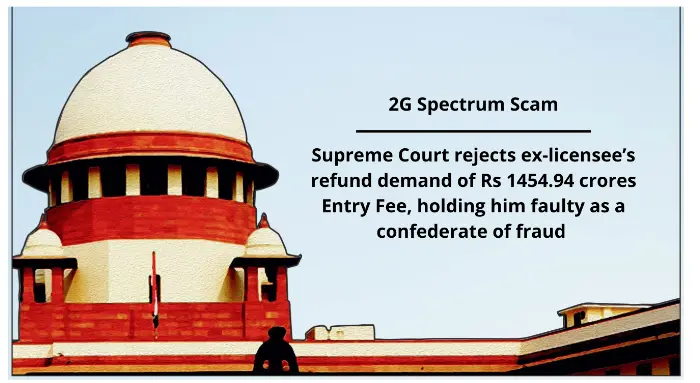Monday, 29th April 2024
Supreme Court's Rejection of 100% Verification Demand for VVPAT Slips
In News: The Supreme Court declined the request for complete verification of Voter Verified Paper Audit Trails (VVPATs) in Indian elections.
Timeline of Introduction of VVPATs in India
- Emergence of the VVPAT Idea (2010):
- In 2010, the Election Commission of India (ECI) initiated discussions with political parties to enhance transparency in the EVM-based polling process, leading to the inception of the VVPAT concept.
- Prototype Development and Field Trials (2011):
- Field trials of the VVPAT prototype were conducted in various locations, including Ladakh, Thiruvananthapuram, Cherrapunjee, East Delhi, and Jaisalmer, in 2011.
- Approval of VVPAT Design (2013):
- After refining the design and gathering feedback from political parties, an ECI expert committee approved the VVPAT design in 2013.
- Amendment of Election Rules (2013):
- The Conduct of Elections Rules 1961 were amended in 2013 to accommodate the attachment of a printer with a drop box to the EVM, paving the way for the VVPAT's integration.
- First Implementation in Nagaland (2013):
- The VVPAT system was deployed for the first time in all 21 polling stations of the Noksen Assembly constituency in Nagaland in 2013.
- Phased Introduction and Full Adoption (2017):
- Following the successful trial in Nagaland, the ECI decided to introduce VVPATs gradually, achieving 100% adoption by June 2017.
- Mathematically Sound Audit Sample (2018):
- In 2018, the ECI tasked the Indian Statistical Institute (ISI) with determining a statistically sound sample size for the internal audit of VVPAT slips.
- Enhancement of Audit Requirements (2019):
- Based on the ISI's recommendations and a Supreme Court judgment, the ECI mandated the counting of VVPAT slips from five randomly selected polling stations per Assembly constituency.
Legal Cases Surrounding VVPAT
- Subramanian Swamy vs ECI (2013):
- The Supreme Court's ruling in this case underscored the necessity of a paper trail for ensuring free and fair elections, leading to the funding and implementation of VVPATs.
- Chandrababu Naidu Case (2019):
- Chandrababu Naidu's plea for increased randomization of VVPAT slips was debated, with the ECI citing logistical challenges and the court eventually ordering counting from five polling stations per constituency.
Recent VVPAT-EVM Tally Case
- Petition by ADR (2023):
- A petition filed by the Association for Democratic Reforms (ADR) sought 100% verification of votes cast using VVPATs, advocating for the use of barcodes on VVPAT slips to expedite the process.
- SC Ruling (2023):
- The Supreme Court rejected the demand for 100% verification but issued directives to the ECI, including the sealing and storage of symbol loading units (SLUs) and enabling candidates to seek verification of EVMs, with expenses borne by the candidates.
- Additionally, the court suggested exploring the possibility of using counting machines for VVPAT slip tallying.
Source: IE
ISRO Utilized Satellite Remote-Sensing for Analyzing Glacial Lakes in the Himalayas
In News: Recently, the Indian Space Research Organisation (ISRO) unveiled a satellite-data-driven analysis regarding the enlargement of glacial lakes within the catchment areas of the Indian Himalayan River basins.
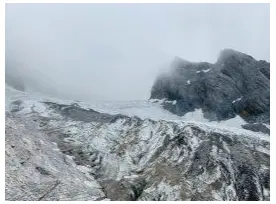
Key Highlights of ISRO's Study on Glacial Lakes
- The Study:
- ISRO conducted an analysis of satellite data archives spanning four decades to examine changes in the glaciated environment.
- Long-term satellite imagery covering the catchments of Indian Himalayan River basins, extending from 1984 to 2023, was utilized in the study.
- Findings:
- ISRO's data revealed a notable increase in the size of glacial lakes.
- Out of 2,431 lakes larger than 10 hectares identified during 2016-17, 676 glacial lakes exhibited significant expansion since 1984.
- Of these expanded lakes, 130 are located in India, distributed across the Indus, Ganga, and Brahmaputra river basins.
- The expansion of these lakes is attributed to the accelerating retreat of glaciers caused by global warming.
Understanding Glacial Lakes:
- Glacial lakes are bodies of water formed in depressions or basins created by the erosive action of glaciers.
- They are commonly found in regions where glaciers once existed or are currently present.
- These lakes vary in size and shape, ranging from small ponds to large, deep bodies of water.
- ISRO categorized glacial lakes into four main types based on their formation processes — moraine-dammed, ice-dammed, erosion-based, and 'others.'
Formation Mechanisms:
- Glacial Erosion: Glaciers erode and shape the landscape, creating depressions and basins.
- Deposition of Glacial Moraines: Sediment and debris carried by glaciers form natural dams, blocking water flow and creating depressions for lake formation.
- Melting Ice: Rising temperatures or glacier retreat leads to the melting of ice, filling depressions with water and forming glacial lakes.
- Terminal Moraine Formation: Glaciers deposit sediment at their terminus, creating dams that impound water and form terminal moraine lakes.
Use of Remote-Sensing Technology:
- Monitoring glacial lakes in the Himalayan region is challenging due to rugged terrain, making satellite remote sensing a valuable tool.
- Satellite data analysis allows for tracking changes in glacial lakes over time, aiding in understanding their environmental impact and developing strategies to manage risks like glacial lake outburst floods and adapt to climate change.
Risk Mitigation Strategies:
- Lowering lake levels by 10 to 30 meters can significantly reduce the impacts of downstream flooding.
- Syphoning off lake water using long High-Density Polyethylene (HDPE) pipes is one effective method employed for risk mitigation.
- In 2016, the Sikkim State Disaster Management Authority utilized this approach to lower water levels in South Lhonak Lake.
Source: IE
Left Wing Extremism
In News: Recently, Incidents of Naxalite Attacks Reported in Chhattisgarh and Assam

Understanding Naxalism: Causes, Impact, and Government Initiatives
- Origin of Naxalism:
- The term "Naxalism" originates from the village Naxalbari in West Bengal, where it began as a rebellion against local landlords following a land dispute incident.
- The movement quickly spread across Eastern India, particularly in underdeveloped regions of states like Chhattisgarh, Odisha, and Andhra Pradesh.
- Left-wing extremists associated with Naxalism are globally known as Maoists and in India as Naxalites.
- Objectives of Naxalism:
- Naxalites advocate for the armed overthrow of the Indian government and the establishment of a communist state based on Maoist principles.
- They perceive the state as oppressive and serving the interests of the ruling elite, seeking to address socio-economic grievances through armed struggle and people's war.
- Modus Operandi of Naxalites:
- Naxalite groups engage in guerrilla warfare, attacks on security forces, extortion, intimidation, and propaganda.
- They aim to capture state power through armed insurgency, mass mobilization, and strategic alliances, targeting government institutions, infrastructure, and economic interests.
- In areas under their control, Naxalites establish parallel governance structures, providing basic services and dispensing justice.
Status of Left-Wing Extremism (LWE) in India:
- Violent incidents in Naxalism-affected states have significantly decreased, with a 77% reduction in 2022 compared to the peak in 2010.
- The number of affected districts dropped from 90 to 45, and deaths of security forces and civilians in LWE violence decreased by 90%.
- States Affected by LWE: Chhattisgarh, Jharkhand, Odisha, Bihar, West Bengal, Andhra Pradesh, Telangana, Maharashtra, Madhya Pradesh, and Kerala.
Causes of Naxalism:
- Socio-Economic Factors:
- High poverty rates and lack of development in underdeveloped regions.
- Displacement of indigenous communities (Adivasis) from their traditional lands due to mining and development projects.
- Exploitation of tribal communities by powerful entities.
- Caste discrimination, particularly against Dalits.
- Political Factors:
- Weak governance and lack of infrastructure in Naxalism-affected areas.
- Disillusionment with democracy and failure of the democratic system to address grievances.
Initiatives of the Government Against Naxalism:
- National Policy and Action Plan to address Left-Wing Extremism.
- Initiatives like SAMADHAN, Aspirational Districts Programme, Security Related Expenditure (SRE) Scheme, and Special Central Assistance (SCA) for LWE-affected districts.
- Projects for fortifying police stations, improving road connectivity, and enhancing socio-economic development in affected areas.
Way Forward:
- Targeted security operations using intelligence-based approaches.
- Rehabilitation and reintegration of former extremists.
- Empowering local peace ambassadors and fostering open communication channels.
- Promoting socio-economic development and ecological sustainability in affected areas.
|
UPSC Previous Year Questions Mains (2015) Q. The persisting drives of the government for development of large industries in backward areas have resulted in isolating the tribal population and the farmers who face multiple displacements. With Malkangiri and Naxalbari foci, discuss the corrective strategies needed to win the Left-Wing Extremism (LWE) doctrine that affected citizens back into the mainstream of social and economic growth. Mains (2018) Q. Article 244 of the Indian Constitution relates to administration of scheduled areas and tribal areas. Analyze the impact of non-implementation of the provisions of the Fifth schedule on the growth of Left-wing extremism. Mains (2020) Q. What are the determinants of left-wing extremism in the Eastern part of India? What strategy should the Government of India, civil administration and security forces adopt to counter the threat in the affected areas? |
Source: TH
US Priority Watch List
In News: The United States' USTR Special 301 Report has once again placed India on the 'Priority Watch List' (PWL) of countries, alongside China, Russia, Venezuela, and three others. This decision comes in response to concerns regarding Intellectual Property (IP) protection and enforcement.
Understanding the USTR's Special 301 Report
- Description:
- The USTR's Special 301 Report is an annual evaluation mandated by Section 182 of the US Trade Act of 1974.
- Its purpose is to evaluate the adequacy and effectiveness of intellectual property (IP) protection and enforcement practices among US trading partners.
- Criteria for Designation:
- The USTR considers various factors such as the severity of IP concerns, economic impact on US rights holders, and progress made in addressing identified issues when designating countries to the Priority Watch List (PWL) or Watch List.
- Priority Watch List (PWL):
- Countries designated to the PWL face serious allegations of inadequate IP protection and enforcement.
- The USTR may initiate formal trade investigations or impose sanctions if significant improvements are not demonstrated.
- Watch List:
- Countries placed on the Watch List exhibit some concerning IP practices, although not as severe as those on the PWL. The USTR uses this list to monitor countries and encourage them to strengthen their IP regimes.
- Initiatives by the US Government:
- The US government employs various initiatives to address IP concerns, including advocacy efforts through bilateral negotiations, participation in the World Trade Organization (WTO), and stakeholder engagement.
- Additionally, technical assistance is provided to strengthen developing countries' IP systems, and anti-counterfeiting and piracy efforts are undertaken through joint actions and capacity building.
Concerns Related to India in the Report:
- India's Placement:
- India consistently finds itself on the 'priority watch' list, indicating significant concerns regarding IP protection, enforcement, and market access for American IP stakeholders.
- Inadequate IP Enforcement:
- The USTR report highlights shortcomings in India's IP enforcement, including high rates of online piracy, trademark opposition case backlogs, and insufficient legal mechanisms for protecting trade secrets.
- Copyright Compliance Issues:
- India is urged to fully implement World Intellectual Property Organisation (WIPO) Internet Treaties and avoid extending copyright licenses to interactive transmissions.
- US-India Trade Policy Forum:
- While progress has been noted under the US-India Trade Policy Forum, several longstanding concerns remain unaddressed.
- India’s Stand on Intellectual Property Rights:
- India asserts that its laws adhere strictly to the World Trade Organisation’s Trade-Related Aspects of Intellectual Property Rights (TRIPS) Agreement, and it is not obligated to make changes based on other international rules.
Recommendations for the Way Forward:
- Establishment of a Joint IP Commission:
- Form a permanent India-US IP Commission with representatives from government, industry, and academia to identify mutual concerns, exchange knowledge, and develop harmonized IP policies.
- Focus on Capacity Building:
- Offer technical assistance to India's patent office and judiciary to streamline patent application processes, enhance training for judges and law enforcement on IP enforcement mechanisms.
- Transparency and Stakeholder Engagement:
- Promote increased transparency in IP decision-making processes through regular consultations with industry stakeholders from both nations.
- Dispute Resolution through Arbitration:
- Establish a streamlined arbitration mechanism for resolving IP disputes between companies, involving independent panels of experts with knowledge of both US and Indian IP law.
Conclusion:
By fostering collaboration, capacity building, and establishing efficient dispute resolution mechanisms, India and the US can move beyond the "Priority Watch List" narrative, fostering innovation and economic growth for both nations.
|
UPSC Previous Year Questions Prelims (2017) Q. With reference to the ‘National Intellectual Property Rights Policy’, consider the following statements:
Which of the above statements is/are correct? (a) 1 only (b) 2 only (c) Both 1 and 2 (d) Neither 1 nor 2 Ans: (c) Prelims (2019) Q2. Consider the following statements:
Which of the statements given above is/are correct? (a) 1 and 3 only (b) 2 and 3 only (c) 3 only (d) 1, 2 and 3 Ans: (c) Mains (2014) Q. In a globalized world, Intellectual Property Rights assume significance and are a source of litigation. Broadly distinguish between the terms—Copyrights, Patents and Trade Secrets. |
Source: BL
Dragon's Egg Nebula
In News: Astronomers have been intrigued by a nebula known as the Dragon’s Egg, characterized by a cloud of gas and dust surrounding a binary star system.
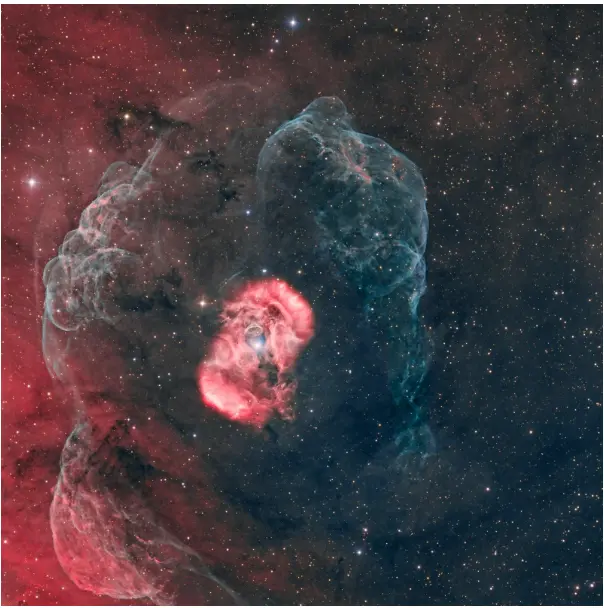
Exploring the Formation of the Dragon’s Egg Nebula
- Origin:
- The Dragon’s Egg Nebula emerged as a result of the intense stellar winds emanating from a massive, hot central star.
- Binary Star System:
- Within the system, one of the stars possesses a magnetic field, while its counterpart lacks one, a rarity among massive stars.
- The magnetic star boasts a mass approximately 30 times greater than that of the Sun, whereas its companion is around 26.5 times more massive than the Sun.
- Evolution:
- Researchers hypothesize that the system originated as a triple star system roughly 4-6 million years ago.
- Over time, the merger of the two innermost stars expelled gas and dust into space, leading to the formation of the nebula approximately 7,500 years ago.
- Unique Characteristics:
- Notably, the nebula harbours an unusually high concentration of nitrogen, attributed to the stellar merger event.
Source: TH
Juna Khatiya
In News: Recently, archaeologists from Kerala University unearthed a 5,200-year-old Harappan settlement at Padta Bet.
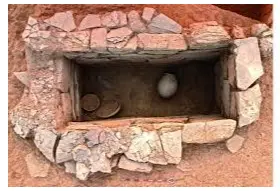
Exploring Juna Khatiya
- Location:
- Situated approximately 1.5 kilometers from Juna Khatiya, an Early Harappan necropolis is found in the Kutch district of Gujarat.
- Significance:
- Juna Khatiya stands out as one of the largest Harappan burial sites, potentially containing up to 500 graves.
- The discovered burials at this site are estimated to date from 3,200 BCE to 2,600 BCE, preceding the establishment of Dholavira and several other Harappan sites in Gujarat.
- Distinctiveness:
- Notably, Juna Khatiya holds significance due to its unique characteristics.
- Unlike other sites such as Dholavira, which feature cemeteries within or near the town, no major habitation has been unearthed in close proximity to Juna Khatiya.
Source: IE
World Intellectual Property Day
In News: Nasscom unveiled the Patenting Trends in India report on World Intellectual Property Day.
Exploring World Intellectual Property Day and Patenting Trends in India
World Intellectual Property Day:
- Celebration:
- Observed annually on April 26, World Intellectual Property Day serves to raise awareness about intellectual property (IP) rights and their role in fostering innovation and creativity for societal progress.
- The day underscores the importance of a balanced approach to IP protection, considering both the rights of creators and the public interest.
- Establishment and Theme:
- World Intellectual Property Day was established in 2000 by the World Intellectual Property Organization (WIPO).
- The official theme for World Intellectual Property Day 2024 is 'IP and the SDGs: Building Our Common Future with Innovation and Creativity.'
- Historical Background:
- In 1883, the Paris Convention for the Protection of Industrial Property was signed, providing legal protection for inventions, trademarks, and industrial designs.
- The Convention establishing WIPO came into force in 1970, and in 1974, WIPO became a specialized agency of the United Nations.
- WIPO, with 193 member states, works towards promoting the protection and advancement of intellectual property worldwide.
Patenting Trends in India Report:
- Release:
- Nasscom released the Patenting Trends in India Report on World Intellectual Property Day.
- Overview:
- In FY2023, India witnessed a significant surge in patent filings, reaching 83,000, with an annual growth rate of 24.6%, the highest in the past two decades.
- The number of patents granted also notably increased, more than doubling between FY2019 and FY2023.
- The proportion of patents filed by Indian residents has doubled over the last decade, accounting for over 50% of total filings by FY2023.
- Key Areas:
- Healthcare emerged as the dominant sector for patent applications, particularly in medical imaging, diagnostics, report generation, and testing.
- Other notable areas for patent filings include Automation/Software Development and Retail/e-commerce.
- Artificial Intelligence (AI) witnessed significant patent filings in image processing, Natural Language Processing (NLP), and Predictive modeling, with emerging areas like Gen AI, Medical Data Processing, and Cognitive computing also gaining traction.
Source: LM
NOTA (None of the Above)
In News: Recently, the Supreme Court issued a notice to the Election Commission in response to a plea requesting fresh elections in a constituency where the 'none of the above' (NOTA) option on the Electronic Voting Machine (EVM) received the highest number of votes.
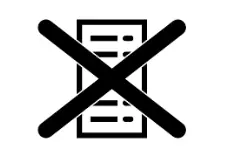
Exploring NOTA (None of the Above)
- Definition and Purpose:
- NOTA serves as a ballot option enabling voters to abstain from supporting any contesting candidate, expressing negative opinions or a lack of support.
- It provides electors with the right to reject candidates while maintaining the confidentiality of their decision.
- Introduction and Usage:
- NOTA was first utilized in the 2013 Assembly elections across five states: Chhattisgarh, Mizoram, Rajasthan, Delhi, and Madhya Pradesh, followed by the 2014 General Elections.
- Its implementation stemmed from a 2013 Supreme Court directive in the PUCL versus Union of India case.
- Casting a NOTA Vote:
- The NOTA option is typically placed at the bottom of the candidates' list in Electronic Voting Machines (EVMs).
- Previously, voters had to inform the presiding officer to cast a negative ballot, whereas now, they simply press the NOTA option on the EVM.
- Counting and Impact:
- The Election Commission clarified that votes cast as NOTA are indeed counted but are categorized as 'invalid votes.'
- Even if NOTA receives the highest number of votes in a constituency, the candidate with the second-highest vote count is declared the winner.
- Consequently, NOTA votes do not alter the election outcome.
Source: FP
Raman Spectroscopy
In News: Recently, researchers employed a non-invasive laser technique called Raman spectroscopy to determine the source of a piece of ivory, enabling customs and law enforcement agencies to differentiate between ivory derived from extinct mammoths and that from living elephants.

Exploring Raman Spectroscopy
- Definition and Principle
- Raman spectroscopy is an analytical technique utilized to measure the vibrational energy modes of a sample by analyzing scattered light.
- It involves illuminating a substance with a laser and examining the light scattered off its surface.
- This technique relies on the interaction of light with the chemical bonds within a material to provide chemical and structural information.
- Functionality
- Raman spectroscopy offers valuable insights into substances by identifying them through their characteristic Raman 'fingerprint.'
- Information is extracted through the detection of Raman scattering from the sample, allowing for the analysis of chemical composition and molecular structure.
- Historical Significance
- Sir C.V. Raman introduced the "Raman effect" on February 28, 1928, which earned him the Nobel Prize in Physics in 1930.
Understanding the Raman Effect:
- Explanation
- The Raman effect refers to a change in the wavelength of light that occurs when molecules deflect a light beam.
- When a light beam traverses a dust-free, transparent sample of a chemical compound, most of the scattered light remains at the same wavelength as the laser source, termed Rayleigh Scatter.
- However, a minute portion of light (typically 0.0000001%) scatters at different wavelengths, known as Raman Scatter, which provides valuable information about the analyte's chemical structure.
Source: DTE
Authorised Economic Operator (AEO) Programme
In News: The Centre has recently expanded the Authorised Economic Operator (AEO) status to include the gem and jewellery sector.
Exploring the Authorised Economic Operator (AEO) Programme:
- Definition and Framework:
- An AEO is a business entity engaged in international goods movement, complying with national customs laws, and approved by or on behalf of the national administration in adherence to the World Customs Organization (WCO) standards.
- The WCO established the SAFE Framework of Standards (WCO SAFE FoS) in June 2005, with AEO being one of its key pillars.
- Objectives and Benefits:
- The AEO programme fosters closer collaboration between customs departments and the trade industry, aiming to enhance supply chain security.
- Introduced in India by the Central Board of Indirect Taxes and Customs (CBIC) in 2011, it offers benefits such as simplified customs procedures and expedited clearances to entities demonstrating high security standards.
- AEO status signifies reliability and security in the supply chain, enabling customs resources to focus on riskier businesses.
- Eligibility and Application:
- Business entities involved in international supply chain activities in India, regardless of size, can apply for AEO status.
- Examples of eligible entities include importers, exporters, Custom House Agents (CHAs), and Custodians or Terminal Operators.
Key Insights into the World Customs Organization (WCO):
- Background and Mission:
- Established in 1952, the WCO is an independent intergovernmental body dedicated to enhancing customs administrations' effectiveness and efficiency.
- It is the sole intergovernmental organization exclusively focused on customs matters, representing 186 customs administrations globally.
- Scope and Functions:
- The WCO's work encompasses developing global standards, simplifying and harmonizing customs procedures, enhancing trade supply chain security, and facilitating international trade.
- Additionally, it undertakes initiatives on customs enforcement, compliance activities, anti-counterfeiting, integrity promotion, and capacity building programmes.
- Harmonized System and Technical Administration:
- The WCO maintains the international Harmonized System goods nomenclature and administers technical aspects of the WTO Agreements on Customs Valuation and Rules of Origin.
Source: TH
Questioning the polls ‘rain washes out play’ moments
In News: A recent article delves into the election of a candidate contesting from the Surat Lok Sabha constituency in Gujarat, where no opposition was present, and examines its repercussions on electoral and democratic processes across the country.
Current Issue: Opposition to Opposite Party’s Candidate’s Nomination
- Rejection of the Nomination Papers
- The candidate's nomination papers for the Surat constituency were rejected due to objections raised regarding the authenticity of the proposers' signatures.
- Despite seeking clarification from the candidate, the Returning Officer (RO) rejected all three sets of nomination papers as the proposers could not appear before the RO within the stipulated time.
- Rejection of Other Nomination Papers
- The election rules permit the substitution of a candidate if the original candidate's nomination is rejected.
- However, even the nomination paper of the substitute candidate was rejected for similar reasons, leading to the ruling party's candidate being declared the winner.
Nomination Law in India
- Section 33 of RPA, 1951
- This section outlines the requirements for a valid nomination, including the eligibility of proposers from the respective constituency.
- Recognized political parties require one proposer, while unrecognised parties and independents need ten proposers.
- Scrutiny of Nomination Papers (Section 36 of RP Act)
- The Returning Officer (RO) must scrutinize nomination papers, ensuring they meet substantive criteria.
- Any defect not of a substantial character should not result in rejection, except for issues like forged signatures.
Issues in Unopposed Elections of Candidates
- Concerns for NOTA Voters
- The absence of contested elections denies voters the opportunity to choose the 'None of the Above' (NOTA) option.
- This undermines the intended purpose of NOTA and challenges the legitimacy of the electoral process.
- Undermining the Relevance of Voters
- The present electoral process excludes electors from choosing their representatives, as candidates are declared elected without opposition.
- This discrepancy between democratic principles and pragmatic procedures diminishes voters' influence.
- Assessing the Extreme Situation
- The electoral system's design allows candidates to manipulate elections by ensuring zero opposition, potentially denying millions of electors their statutory rights.
Recourses Against Rejection of Nomination Papers
- Exploring Election Tribunal Options
- The RP Act establishes Election Tribunals to resolve disputes related to election nominations.
- Dissatisfied parties can appeal to the High Court and eventually to the Supreme Court, which has set significant precedents in election disputes.
- Taking Recourse to Article 329 Read With RP Act, 1951
- Article 329(b) of the Constitution, read with the RP Act, provides for filing election petitions in the concerned High Court to challenge improper rejection of nomination papers.
- Amending the First-Past-the-Post-System (FPTPS)
- Consideration should be given to amending the FPTPS to introduce minimum vote percentages for winning candidates or transfer vacant seats to nominated categories if no candidates contest twice.
Conclusion
Ensuring fairness and transparency in the electoral process is essential for upholding democratic principles. Collaborative efforts among political parties, electoral authorities, and the judiciary can strengthen India's democratic foundation and preserve the people's voice in governance.
|
UPSC Previous Year Questions Prelims (2017) Q. Consider the following statements:
Which of the statements given above is/are correct? (a) 1 and 2 only (b) 2 only (c) 2 and 3 only (d) 3 only Ans: (d) Mains (2022) Q. Discuss the role of the Election Commission of India in the light of the evolution of the Model Code of Conduct. Mains (2017) Q. To enhance the quality of democracy in India the Election Commission of India has proposed electoral reforms in 2016. What are the suggested reforms and how far are they significant to make democracy successful? |
Source: TH
Share the article
Edukemy’s Current Affairs Quiz is published with multiple choice questions for UPSC exams
MCQ
Get Latest Updates on Offers, Event dates, and free Mentorship sessions.

Get in touch with our Expert Academic Counsellors 👋
Frequently Asked Questions
UPSC Daily Current Affairs focuses on learning current events on a daily basis. An aspirant needs to study regular and updated information about current events, news, and relevant topics that are important for UPSC aspirants. It covers national and international affairs, government policies, socio-economic issues, science and technology advancements, and more.
UPSC Daily Current Affairs provides aspirants with a concise and comprehensive overview of the latest happenings and developments across various fields. It helps aspirants stay updated with current affairs and provides them with valuable insights and analysis, which are essential for answering questions in the UPSC examinations. It enhances their knowledge, analytical skills, and ability to connect current affairs with the UPSC syllabus.
UPSC Daily Current Affairs covers a wide range of topics, including politics, economics, science and technology, environment, social issues, governance, international relations, and more. It offers news summaries, in-depth analyses, editorials, opinion pieces, and relevant study materials. It also provides practice questions and quizzes to help aspirants test their understanding of current affairs.
Edukemy's UPSC Daily Current Affairs can be accessed through:
- UPSC Daily Current Affairs can be accessed through Current Affairs tab at the top of the Main Page of Edukemy.
- Edukemy Mobile app: The Daily Current Affairs can also be access through Edukemy Mobile App.
- Social media: Follow Edukemy’s official social media accounts or pages that provide UPSC Daily Current Affairs updates, including Facebook, Twitter, or Telegram channels.

